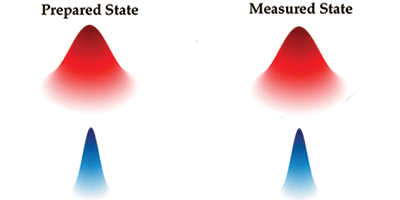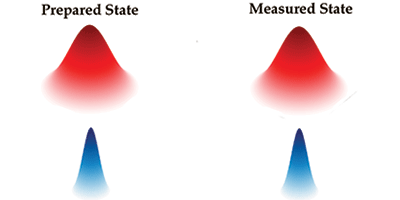Photon Reader Loses Less in Translation
Nearly every scheme for quantum communication, such as cryptography and teleportation, relies on photons to store and carry information and “decoders” to read this information out. These decoders use various tricks to determine a photon’s quantum state, but a common problem is that they may not pick up certain aspects of quantum fluctuations – a kind of “noise” inherent to quantum objects that can nonetheless carry information. In joint papers in Physical Review Letters and Physical Review A, Felippe Barbosa at the University of São Paulo, Brazil, and colleagues present a more complete way of determining the quantum state of photons. Their technique, called resonator detection, could help future forms of communication that make use of the extra information carried by quantum fluctuations.
The standard way to determine the quantum state of photons is to compare their amplitudes to a reference light source. This method, called homodyne detection, can’t see how energy is spread across the spectrum of quantum fluctuations – like listening to an orchestra, but not being able to hear the different intensities of the instruments. Barbosa et al. show that first passing the photons through an appropriately tuned resonant cavity makes this distribution detectable. In the team’s experiment, they show that photon states with slightly different noise characteristics look identical to homodyne detection, while resonator detection is able to tell them apart. – Jessica Thomas





